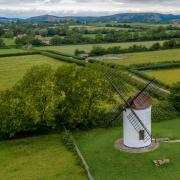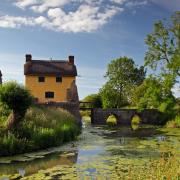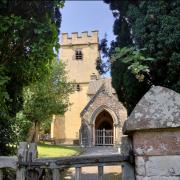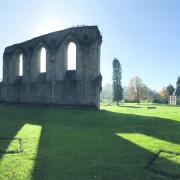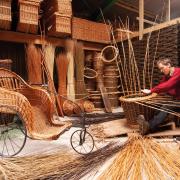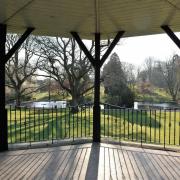This summer, visit some of these amazing English Heritage locations and learn a bit more about the amazing history of Somerset
With it likely most of us will need to stay closer to home this summer, there are lots of opportunities right on your doorstep you may not have known about. English Heritage looks after over 400 buildings, monuments, and locations of interest across the country. It can be hard to pick where to visit, so we've put together a handy guide to Somerset heritage sites that you can visit for free.
Daws Castle
In the days of Viking invasion, King Alfred commissioned Daws Castle as a clifftop fortress which would defend the region from any approaching army. The Anglo-Saxon Chronicle even claims that the defenders of Daws Castle prevented a raiding party from sailing up the Severn Estuary in 914AD. The castle was of great importance in this period and was even allowed its own mint.
But by the Medieval Period, the castle had been left to ruin. What is left is minimal and some has been lost to coastal erosion over the years. About five acres of walled area remain and the surviving stone rises in some places to almost two meters. You can park at the nearby town of Watchet and walk up to the castle. The route runs along the coastal path and offers some stunning views across the Bristol Channel. Watchet also has plenty of amenities such as toilets and food so you can definitely make an afternoon of it or even longer.
Alternatively, if you don't mind paying a small amount for tickets, Cleeve Abbey is just a ten minute drive down the road. At 800 years old, this monastery has survived remarkably well, particularly when you factor in the dissolution in 1536. With plenty of history to explore, this is a great location to really immerse yourself in. The grounds also provide some excellent walking opportunities so its a perfect place to go on a sunny day. You will need to book in advance due to Covid restrictions and all information can be found on the English heritage website.

Dunster
On the north-east boundary of Exmoor National Park lies the village of Dunster which is home to more than one English Heritage site. As far back as the Middle Ages, the village has been a significant part of the wool trade, England's biggest export at the time. On the high street in Dunster, you will be able to explore the Yarn Market, a 17th century timber-framed octagonal market hall which stands as testament to the wealth of the village's cloth trade. From there you can also visit local food outlets and other shops, before heading out of town.
At the north edge of the village lies the second English Heritage site on your Dunster walk: the Butter Cross. This stone monument dates back to the 1400s and would have been a site for pause and reflection for any travellers entering the village. A couple of centuries later, it earnt its name as the location for residents to buy butter. The Butter Cross would have originally sat at almost seven metres high and what is left is still worth a look.

The final English Heritage stop on your Dunster walk is Gallox Bridge. Arching across the River Avill, the 600 hundred year old bridge once carried packhorses bringing fleeces from Exmoor to the village to be sold at market. There are plenty of other landmarks around Dunster to look at while you walk, including Dunster Castle and the 15th century priory church too.

Nunney Castle
Going east now into the heart of Somerset, you'll be able to walk around Nunney Castle just a short drive from Frome. The knight John de la Mare began work on the castle in 1373 as a symbol of his wealth and growing royal favour. The castle comprised of a building made up of four towers, that was encircled by three walls and the brook behind. The castle was later modernised by a rich Londoner in the 1560s before being deliberately ruined during the Civil War. The shell still survives and further excavations have marked where the drawbridge and moat would have been.
Just a 20 minute drive south, visitors can also explore Farleigh Hungerford Castle. There is a small ticket price for entry to this English Heritage Site but it is worth it. The castle is extensive with a long (and occasionally gruesome) history that can be explored through plenty of graphic panels and a free audio tour. It's even home to the best collection of human-shaped lead coffins in England which can be viewed in the crypt - if you're brave enough!
You must book ahead for this location and a full list of things to do on your visit can be found on English Heritage's website.

Stoney Littleton Long Barrow
Not far from Farleigh Hungerford Castle also lies a much older site of interest. The long barrow at Stoney Littleton dates back over 5,000 years and is around 100 feet long. The barrow is accessible to the public and features multiple side chambers where human remains were once buried. You can learn more about the history here and can borrow wind up torches to explore the inside of the barrow when you get there. The surrounding countryside makes for excellent walking too.
Not had enough of ancient history? Then you can also visit Stanton Drew Circles and Cove a short drive away. This is a fairly unheard of location but it is home to the third largest prehistoric standing stone collection in England. The owner of the land does charge £1 for entry to the land but is worth every penny. The 26 surviving standing stones suggest a much grander history of rituals in the prehistoric era. You can learn more about that here.










